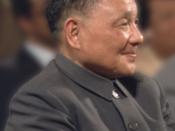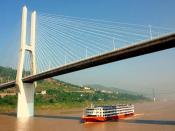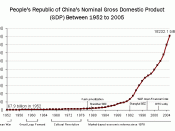IntroductionSo far as the People's Republic of China (hereafter China[1]) is concerned, the process of globalisation may be said to date from December 1978, when Deng Xiaoping introduced a number of farreaching economic reforms. Most importantly, Deng threw open China's doors in a bid to attract overseas investment and promote foreign trade. The success of Deng's outward-looking initiative is reflected, inter alia, in the country's spectacular average annual growth rate of 10 per cent between 1978 and 1995.
Somewhat ironically, China, the world's second largest economy after the USA, is also "the biggest developing country in the world"[2]. But given the failure of central planning under Mao Zedong, this depiction of China should not surprise. Perhaps more importantly, it suggests that the most populous nation on earth has, arguably, much to gain from the increasing globalisation of its economy. As one source argues:The future of China's economic development is bound up inextricably with the global economy.
[3]It should be noted that the extensive literature on globalisation has, thus far, failed to reach general agreement on an unequivocal definition of the phenomenon. For the purpose of this article, the concept is taken to mean "the increasing integration of national economies into expanding international markets"[4]. A similar, more detailed definition is given by Govindarajan and Gupta:"At a worldwide level, globalisation refers to the growing economic interdependence among countries as reflected in increasing cross-border flows of goods, services and know-how". [5]Both definitions reflect the essential thrust of China's post-1978 economic openness, whose most prominent effects have been the growth of the country's foreign trade and foreign direct investment (FDI).
Foreign TradeChina's increasing integration into the world economy is nowhere better illustrated than in its impressive international trade performance since 1978. By 1996, China had become the world's 10th largest trading nation and accounted...


